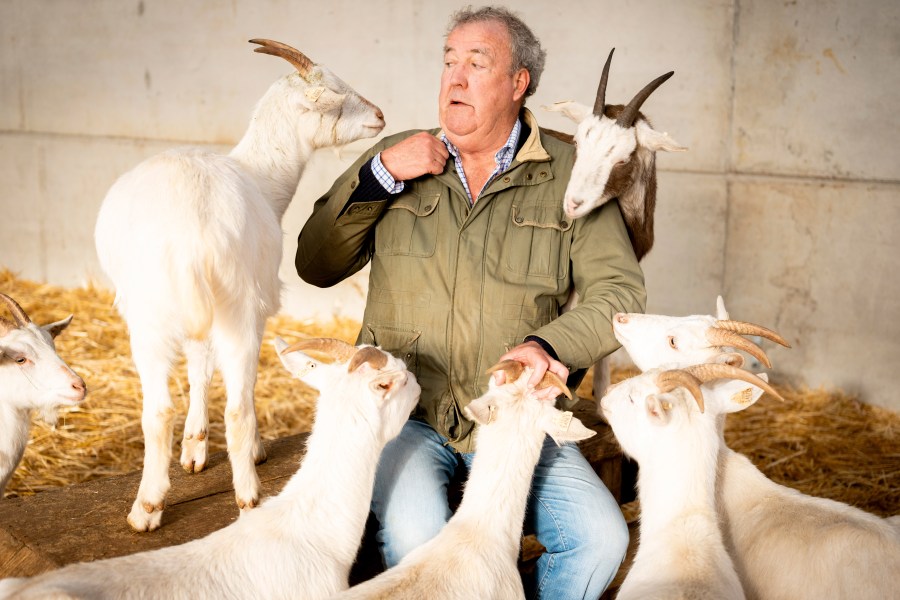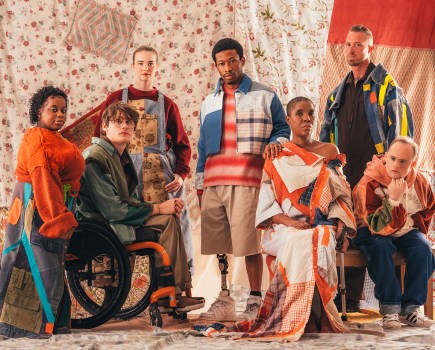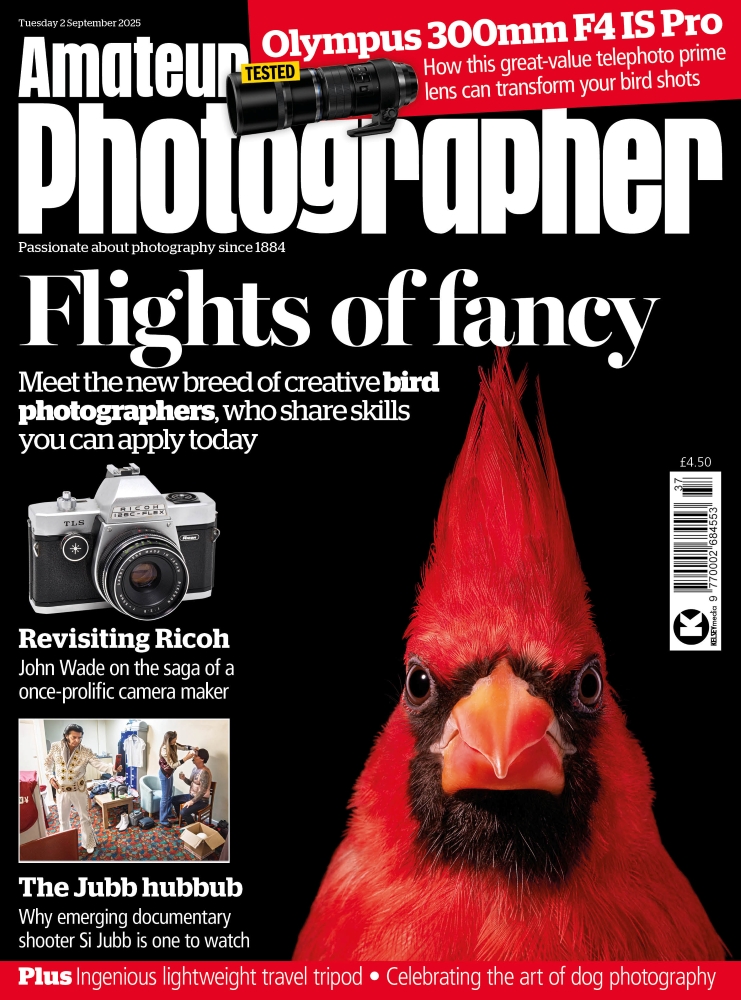In 2001, Harry Borden found Jeremy Clarkson sweet and slightly vulnerable. Two decades later at Diddly Squat Farm, the goats were more cooperative than the man himself.
My first encounter with Jeremy Clarkson was in 2001, when I was commissioned to photograph him for the magazine Arena. At that time, he was in his early 40s and had presented motoring show Top Gear for more than ten years, as well as other programmes including his own talk show from 1998-2000. Even so, he wasn’t as famous as he is today and in my experience his personality was quite different.
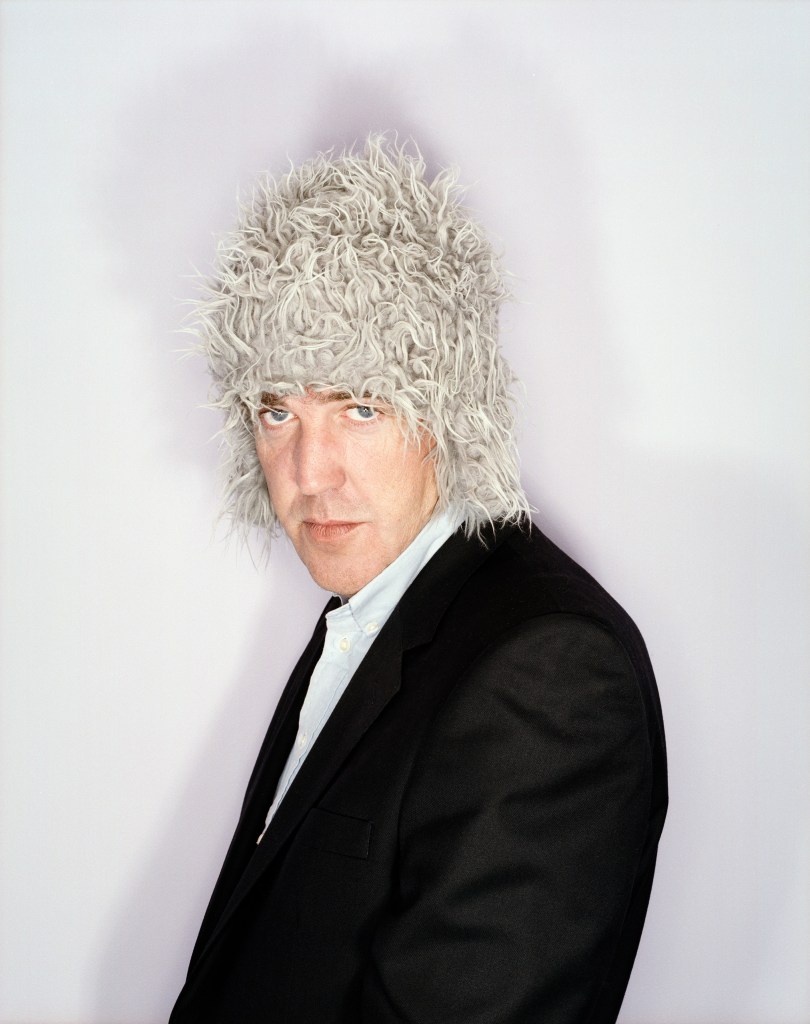
Wine before wardrobe
He was living in Bayswater, London, and I felt quite relaxed as I was buzzed up to his nondescript modern flat. He hadn’t evolved into the intimidating presence he would later become, and was actually more like Big Bird from Sesame Street, stressing about the type of images we should take.
While he had a glass or two (I didn’t join him) I asked him if I could browse through his wardrobe to see if there was something suitable for him to wear. Among the basic middle England attire he favoured, at the bottom of the wardrobe I found a weird Nepalese hat.
When he returned, the alcohol had worked its magic and he readily agreed to wear this strange beanie. In my work for magazines and newspapers, I’ve found it’s important to give them what they want, but also something unexpected. The hat fitted the bill.
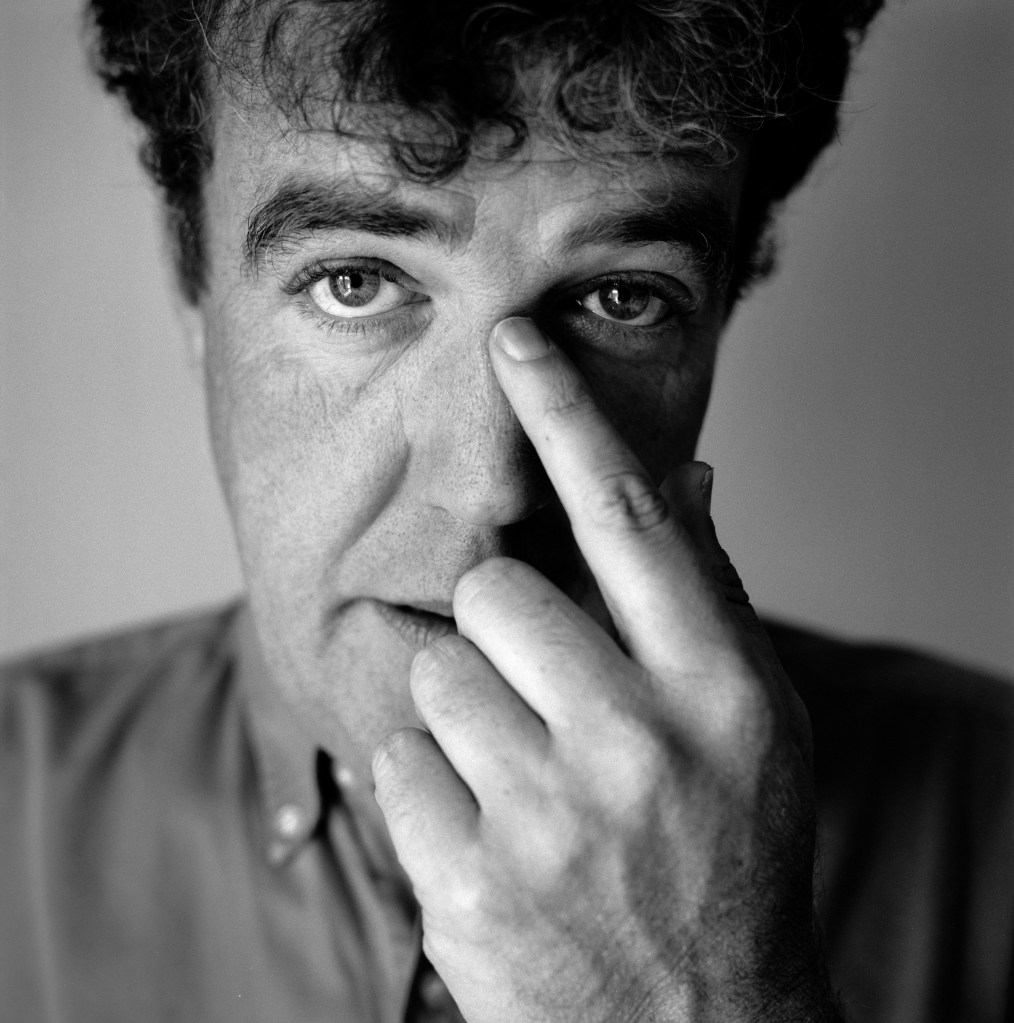
Pre-digital days
Back then, like almost all other professional photographers, I was shooting on film. I used my usual medium format cameras for the shoot: a Pentax 67, a Hasselblad 500 CM and a Fujifilm GW-670 rangefinder. I used natural daylight for most of the pictures, but experimented with light in some shots, using both a ringflash and two Elinchrom flash heads.
As is often the case when meeting people in the public eye, Clarkson confounded my expectations. He was sweet and even slightly vulnerable. For the next 23 years I watched him become ever more well-known, but our paths didn’t cross.
Then, in March this year, The Guardian got in touch with me. They had a potential cover shoot with Clarkson but were concerned about the reputation he now had. He was known for being difficult and had famously had his BBC contract terminated after punching one of Top Gear’s producers. ‘Don’t worry,’ I assured the picture editor, ‘I’ve got this.’

A reunion at Diddly Squat
The shoot took place at Clarkson’s current residence, Diddly Squat Farm in Chipping Norton, Oxfordshire. It’s also the location for Clarkson’s Farm, a documentary series about his farming experiences made by Amazon. I drove there with my son Fred, who was shooting behind-the-scenes video for our YouTube channel. We were heavily delayed due to road closures. We were tired and frazzled as we entered the location and saw his mansion. It’s a big, sandy-coloured structure, part neoclassical Georgian and part Southfork Ranch. It was described by his neighbour during a planning dispute as ‘Empty of intellect and panache, like its owner.’
I’d been told to go around the back of the house, where there’s a car park next to offices and a warehouse. We were greeted by Lisa, a friendly PR employed by Amazon. I showed her some contact sheets and prints from the first shoot, which I’ve made for Clarkson.
Unfortunately, the writer from The Guardian had missed her train so things were running late. We were shown around the farm and I could see the location offered plenty of creative possibilities for me and my Fujifilm GFX 50S. They included a muscular building housing his cars, a chicken run, a polytunnel and lots of goats.
Waiting Hours for Clarkson
Lisa told me the Sunday Times had already shot Jeremy holding a pig. Worryingly, she also told me he had stormed off after a photographer asked him to kiss a piglet he was holding. I began to wonder if the shoot might not be as easy as last time.
Initially, the wait gave me more time to prepare, but the minutes turned to hours. We tried to engage with the people coming in and out of the offices. Everyone seemed slightly fearful, as if Clarkson is a capricious child-emperor who must be placated at all costs. Also, the light was constantly changing and I knew I’d need a little help from the photography gods to get good pictures.
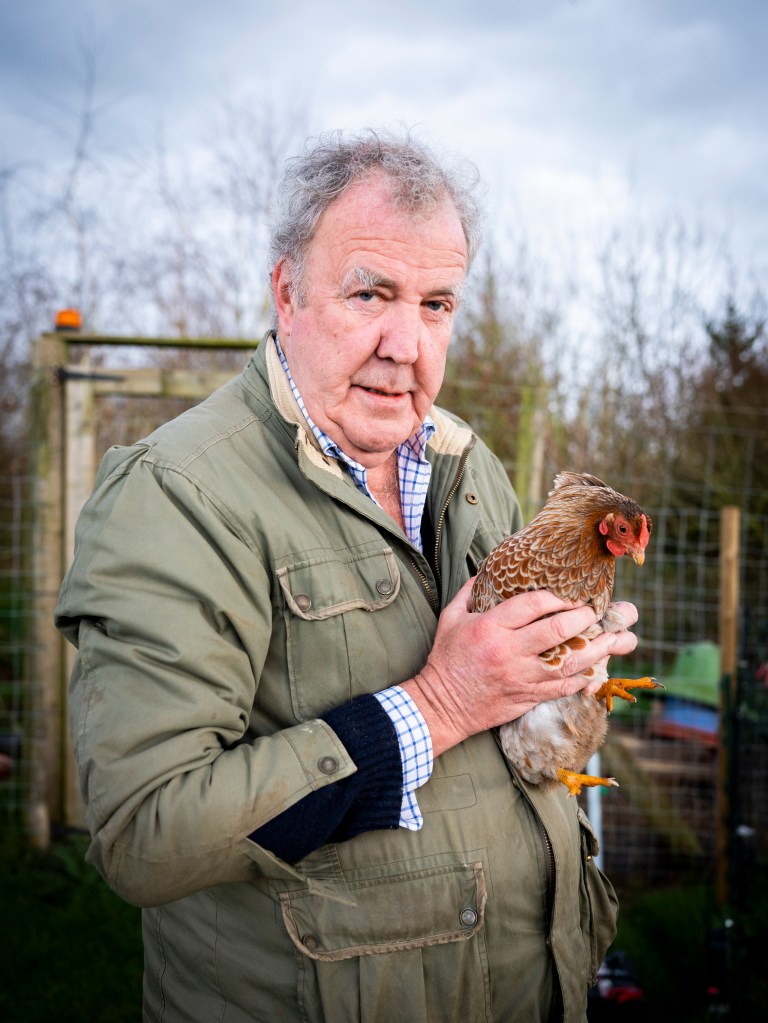
Exhausted but victorious
Eventually, after five hours of waiting, Clarkson emerged from the interview. I showed him the prints and contacts, but his mood was only temporarily lifted. He pooh-poohed my ideas for the shoot and made insulting generalisations about photographers. He had a bad back and was curmudgeonly from start to finish,. I cajoled and bullied him into posing in various locations and eventually we ended up in the goat pen.
The Clarkson persona we see on television is not an act. He doesn’t like photographers or being photographed and when you have that level of success, why do something you don’t want to do? The goats, on the other hand, were wonderfully photogenic and I shot images of them swarming around him like little white devils while Clarkson feared his balls would be butted.
It was overcast for most of the shoot, but right at the end the clouds disappeared and I captured a few genuine moments of Clarkson in front of some farm buildings before he said I could take no more pictures.
Driving back home, I was exhausted but happy. I phoned The Guardian and had a moan about the way Fred and I had been treated. I knew that ultimately I would be judged on the images. Luckily, on that day I had the photography gods on my side.
●As told to David Clark
Harry Borden is one of the UK’s finest portrait photographers. He has won prizes at the World Press Photo awards (1997 and 1999) and was awarded an Honorary Fellowship by the Royal Photographic Society in 2014. The National Portrait Gallery collection holds over 100 of his images. He tells the stories behind dozens of his celebrity shoots on www.youtube.com/@fredandharryborden

